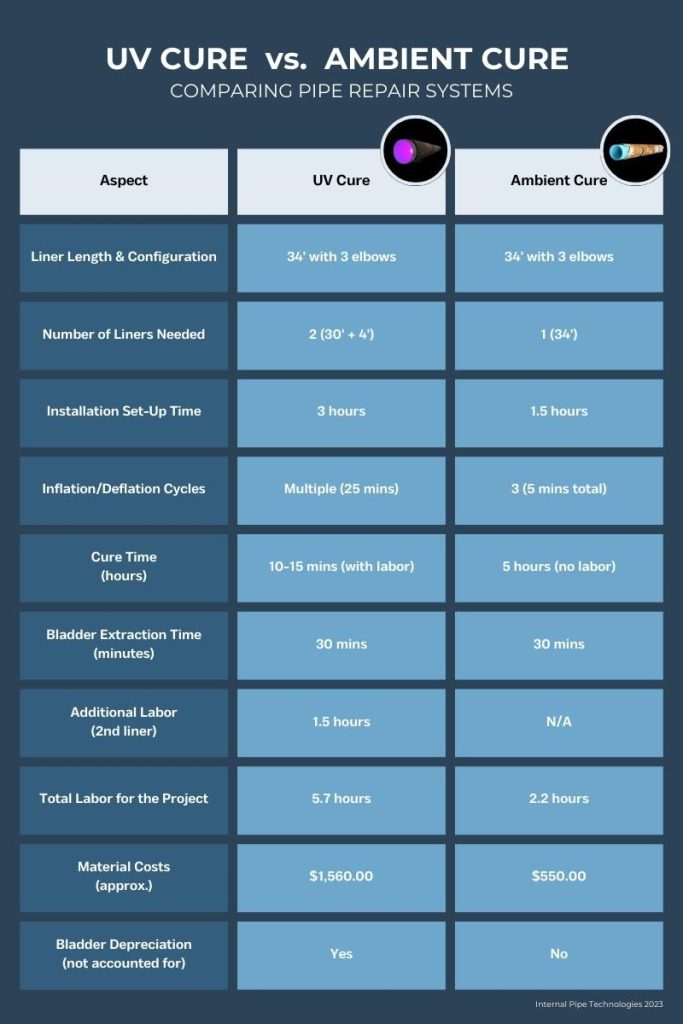In the world of pipe rehabilitation and repair, choosing the right method and equipment can make a significant difference in both project cost, efficiency, margins and profits. Today, we delve into a comparative analysis of UV and Ambient pull-in-place liners, drawing insights from a real-world scenario involving a contractor who experienced a UV system failure during an installation project. We’ll explore the various aspects of these two liner installation methods, including setup time, curing, labor, material costs, and more.
A contractor encountered a UV system failure during an installation project that required them to switch to an Ambient pull-in-place liner. To ensure an accurate comparison, both liners were installed in the same pipeline under similar conditions, and all other factors were kept constant. Let’s take a closer look at the data obtained from this scenario.

Both UV and Ambient systems require approximately 30 minutes for bladder extraction.
In this comparative analysis, we’ve examined the efficiency and cost-effectiveness of UV and Ambient pull-in-place liners based on real-world data. The results clearly demonstrate that the Ambient system had several advantages over the UV system in this particular scenario. It required less setup time and incurred lower material costs. Moreover, the labor hours for the Ambient liner installation were significantly lower. During the cure, the crew actually went to complete another job.
However, it’s essential to note that the choice between UV and Ambient liners may vary depending on the specific project requirements, budget constraints, and equipment availability. Factors such as bladder durability and depreciation also play a crucial role in long-term cost considerations.
Ultimately, this comparative analysis highlights the importance of evaluating different liner installation methods and equipment based on individual project needs to make informed decisions that maximize efficiency and minimize costs.